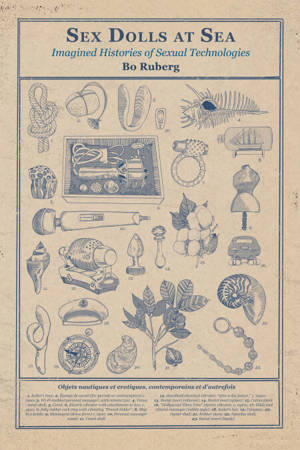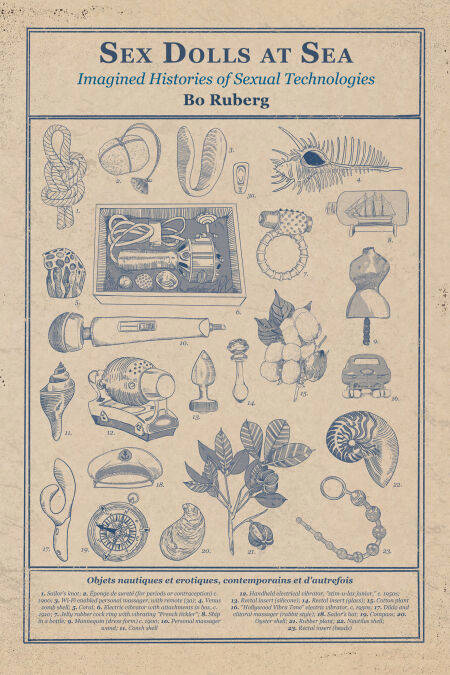
- Afhalen na 1 uur in een winkel met voorraad
- Gratis thuislevering in België vanaf € 30
- Ruim aanbod met 7 miljoen producten
- Afhalen na 1 uur in een winkel met voorraad
- Gratis thuislevering in België vanaf € 30
- Ruim aanbod met 7 miljoen producten
Zoeken
Omschrijving
Investigating and reimagining the origin story of the sex doll through the tale of the sailor’s dames de voyage.
The sex doll and its high-tech counterpart the sex robot have gone mainstream, as both the object of consumer desire and the subject of academic study. But sex dolls, and sexual technology in general, are nothing new. Sex dolls have been around for centuries. In Sex Dolls at Sea, Bo Ruberg explores the origin story of the sex doll, investigating its cultural implications and considering who has been marginalized and who has been privileged in the narrative.
Ruberg examines the generally accepted story that the first sex dolls were dames de voyage, rudimentary figures made of cloth and leather scraps by European sailors on long, lonely ocean voyages in centuries past. In search of supporting evidence for the lonesome sailor sex doll theory, Ruberg uncovers the real history of the sex doll. The earliest commercial sex dolls were not the dames de voyage but the femmes en caoutchouc: “women” made of inflatable vulcanized rubber, beginning in the late nineteenth century.
Interrogating the sailor sex doll origin story, Ruberg finds beneath the surface a web of issues relating to gender, sexuality, race, and colonialism. What has been lost in the history of the sex doll and other sex tech, Ruberg tells us, are the stories of the sex workers, women, queer people, and people of color whose lives have been bound up with these technologies.
The sex doll and its high-tech counterpart the sex robot have gone mainstream, as both the object of consumer desire and the subject of academic study. But sex dolls, and sexual technology in general, are nothing new. Sex dolls have been around for centuries. In Sex Dolls at Sea, Bo Ruberg explores the origin story of the sex doll, investigating its cultural implications and considering who has been marginalized and who has been privileged in the narrative.
Ruberg examines the generally accepted story that the first sex dolls were dames de voyage, rudimentary figures made of cloth and leather scraps by European sailors on long, lonely ocean voyages in centuries past. In search of supporting evidence for the lonesome sailor sex doll theory, Ruberg uncovers the real history of the sex doll. The earliest commercial sex dolls were not the dames de voyage but the femmes en caoutchouc: “women” made of inflatable vulcanized rubber, beginning in the late nineteenth century.
Interrogating the sailor sex doll origin story, Ruberg finds beneath the surface a web of issues relating to gender, sexuality, race, and colonialism. What has been lost in the history of the sex doll and other sex tech, Ruberg tells us, are the stories of the sex workers, women, queer people, and people of color whose lives have been bound up with these technologies.
Specificaties
Betrokkenen
- Auteur(s):
- Uitgeverij:
Inhoud
- Aantal bladzijden:
- 304
- Taal:
- Engels
- Reeks:
Eigenschappen
- Productcode (EAN):
- 9780262369565
- Verschijningsdatum:
- 13/06/2022
- Uitvoering:
- E-book
- Beveiligd met:
- Adobe DRM
- Formaat:
- ePub

Alleen bij Standaard Boekhandel
+ 34 punten op je klantenkaart van Standaard Boekhandel
Beoordelingen
We publiceren alleen reviews die voldoen aan de voorwaarden voor reviews. Bekijk onze voorwaarden voor reviews.











